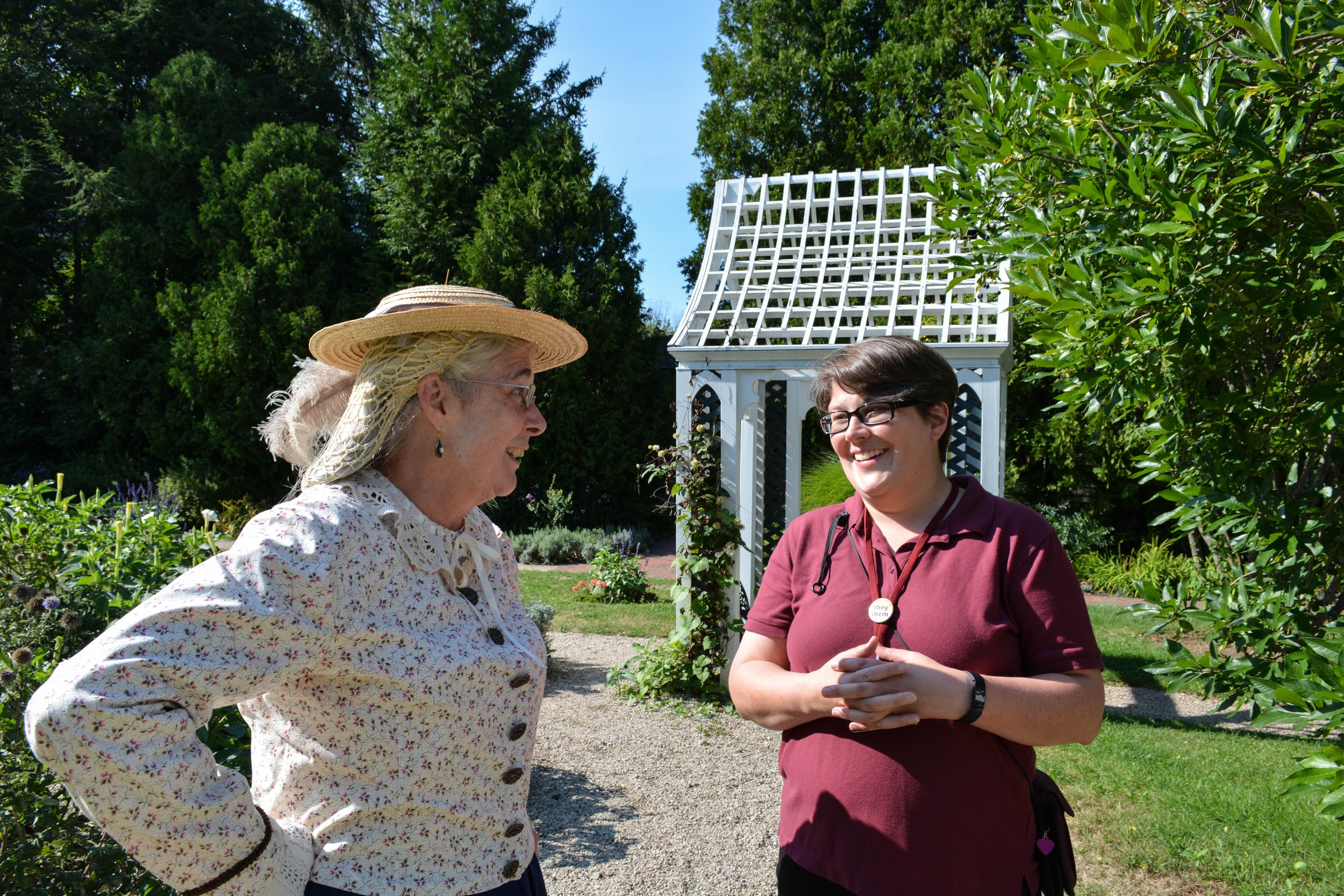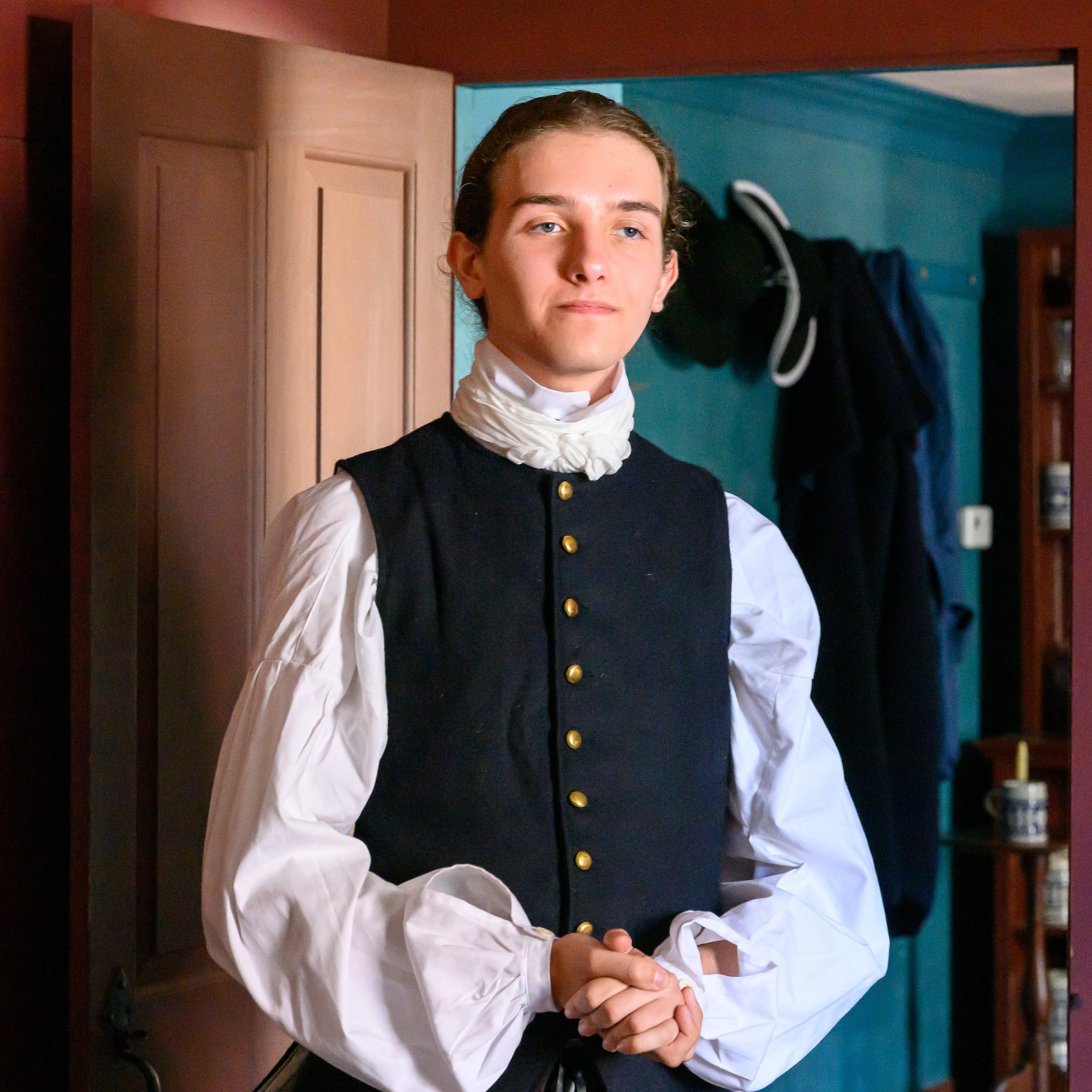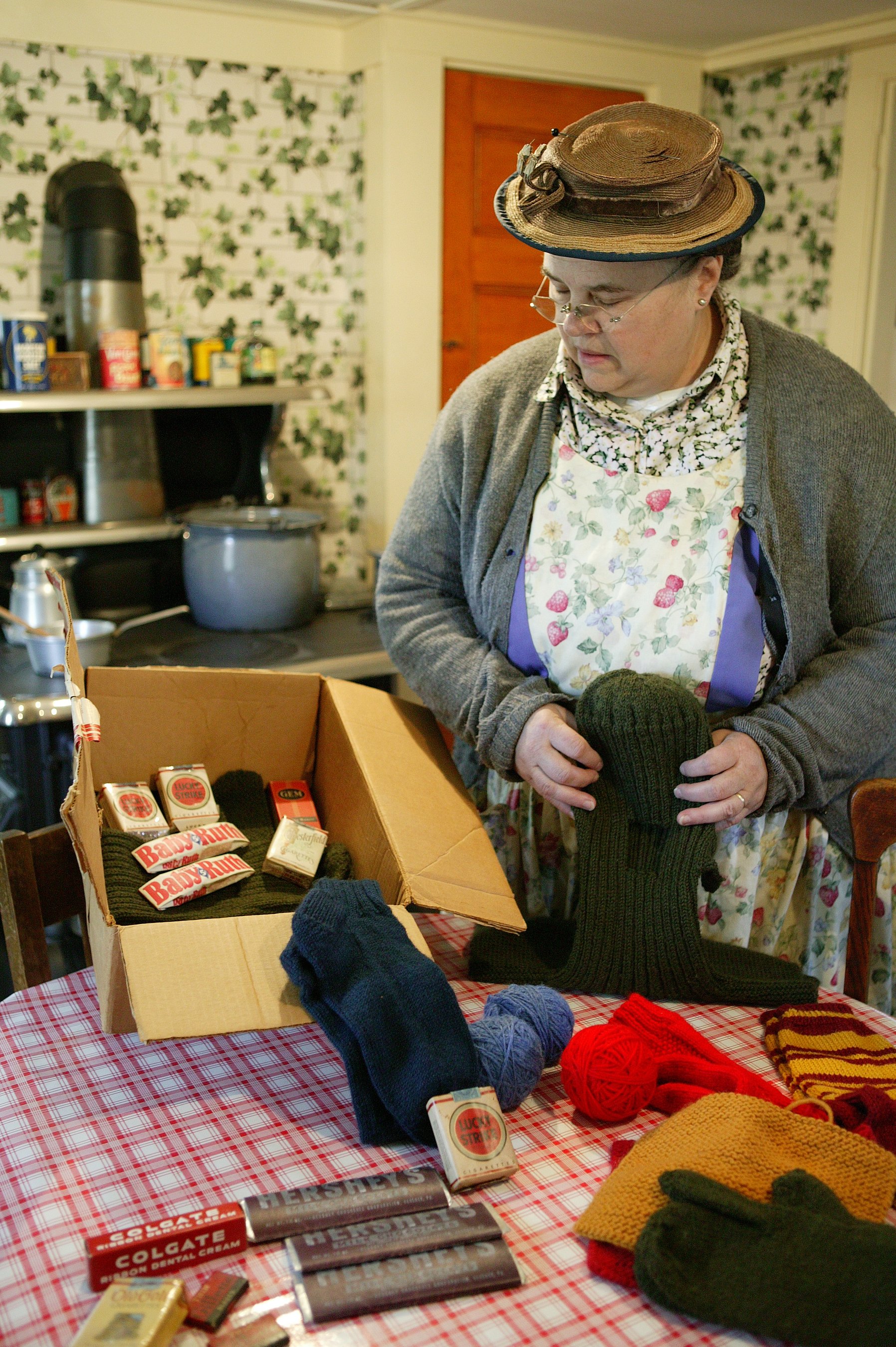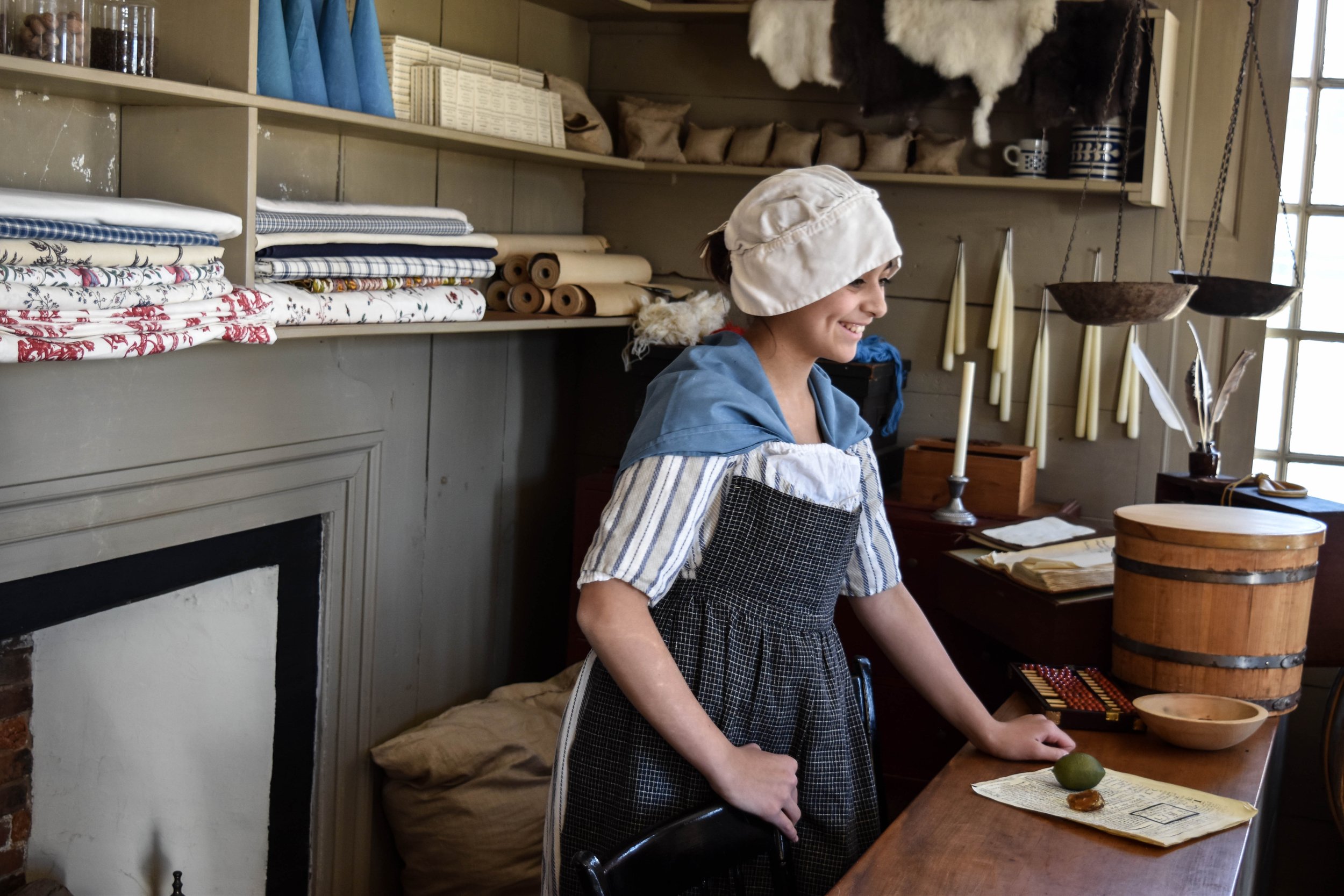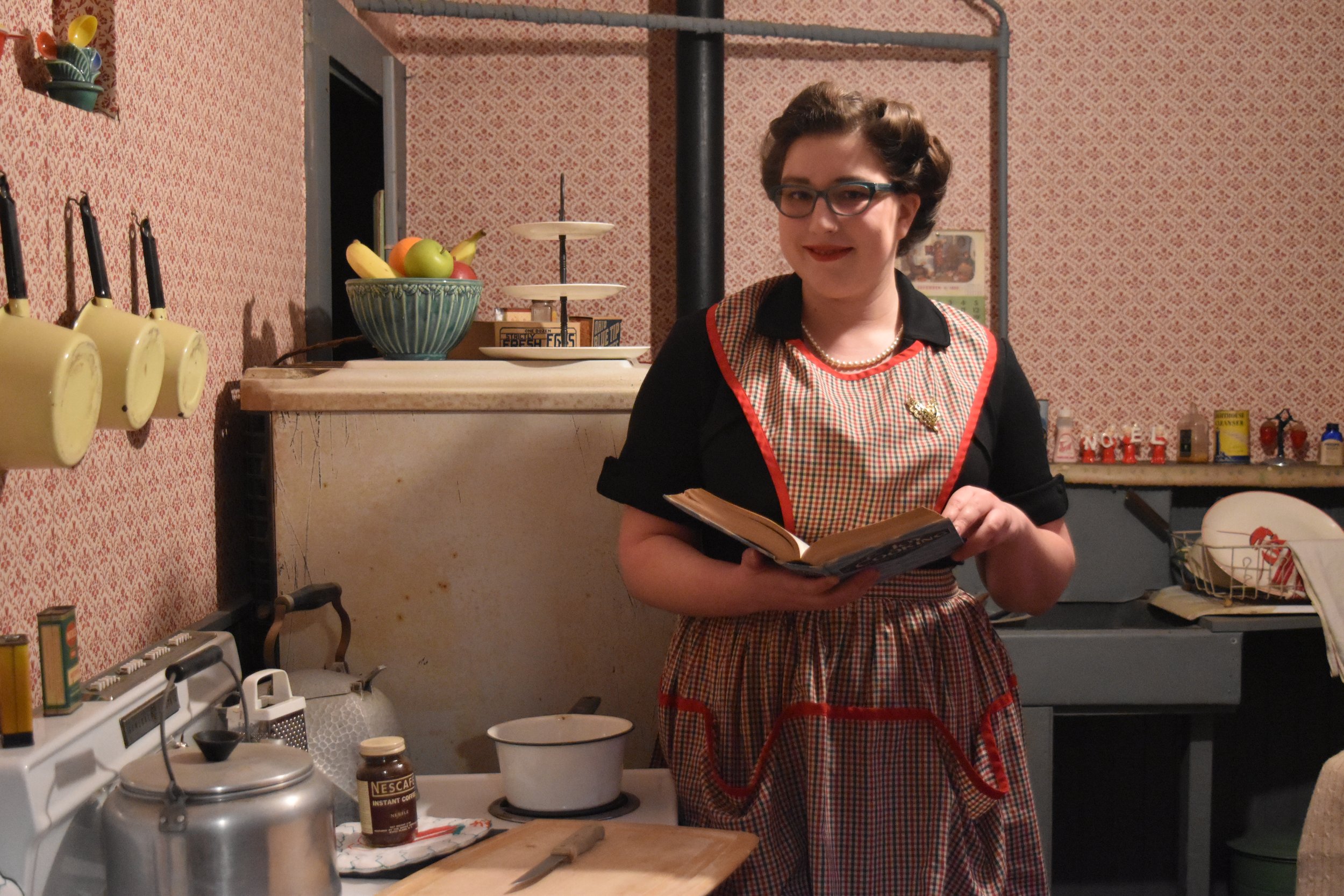Meet the faces of history
Historical roleplayers at Strawbery Banke Museum portray real people who lived in the Puddle Dock neighborhood.
Roleplayers speak from a historical perspective, meaning that they will only talk about the time in which their character lived. The costumes, props, and demonstrations they work into their interpretation are all period-appropriate.
Engage with the Museum’s roleplayers to get an in-depth look at a specific time and place in American history.
Frequently Asked Questions
-
A roleplayer is an actor who portrays a real person who lived in the Puddle Dock Neighborhood in the past. Roleplayers speak from a historical perspective, meaning that they will only talk about the time in which their character lived.
-
Roleplayers tell the story of Strawbery Banke by acting out a chapter in the story. They can answer questions about the person they are portraying and their lives in this neighborhood. However, their answers are limited to the time period and experiences of the individual they portray. Talk to a roleplayer to get an in-depth look at a specific time and place in American history.
-
Strawbery Banke's Education Department researches all historical characters and time periods using primary sources like letters, diaries, newspapers, and material artifacts. This information is collected both from our own collections and from places like public libraries and government archives. Many of our roleplayers also conduct their own research, which can be incorporated into the roleplaying program after being approved by the Education Department.
-
On a given day, visitors might encounter laborers, merchants, immigrants, mariners, homemakers, business owners, tradespeople, or politicians going about their daily lives. Their various stories and perspectives allow visitors to view history in both diverse and unifying ways.
-
Strawbery Banke roleplayers wear accurate reproductions of clothing from eras that are based on garments in the Museum collections, paintings, drawings, photographs, and on research conducted by the Museum and the roleplayers themselves. Clothing is made using historically appropriate materials and techniques, which very from era to era. Many roleplayers make their own clothing, but most often it is sewn by a professional seamstress or costumer.
